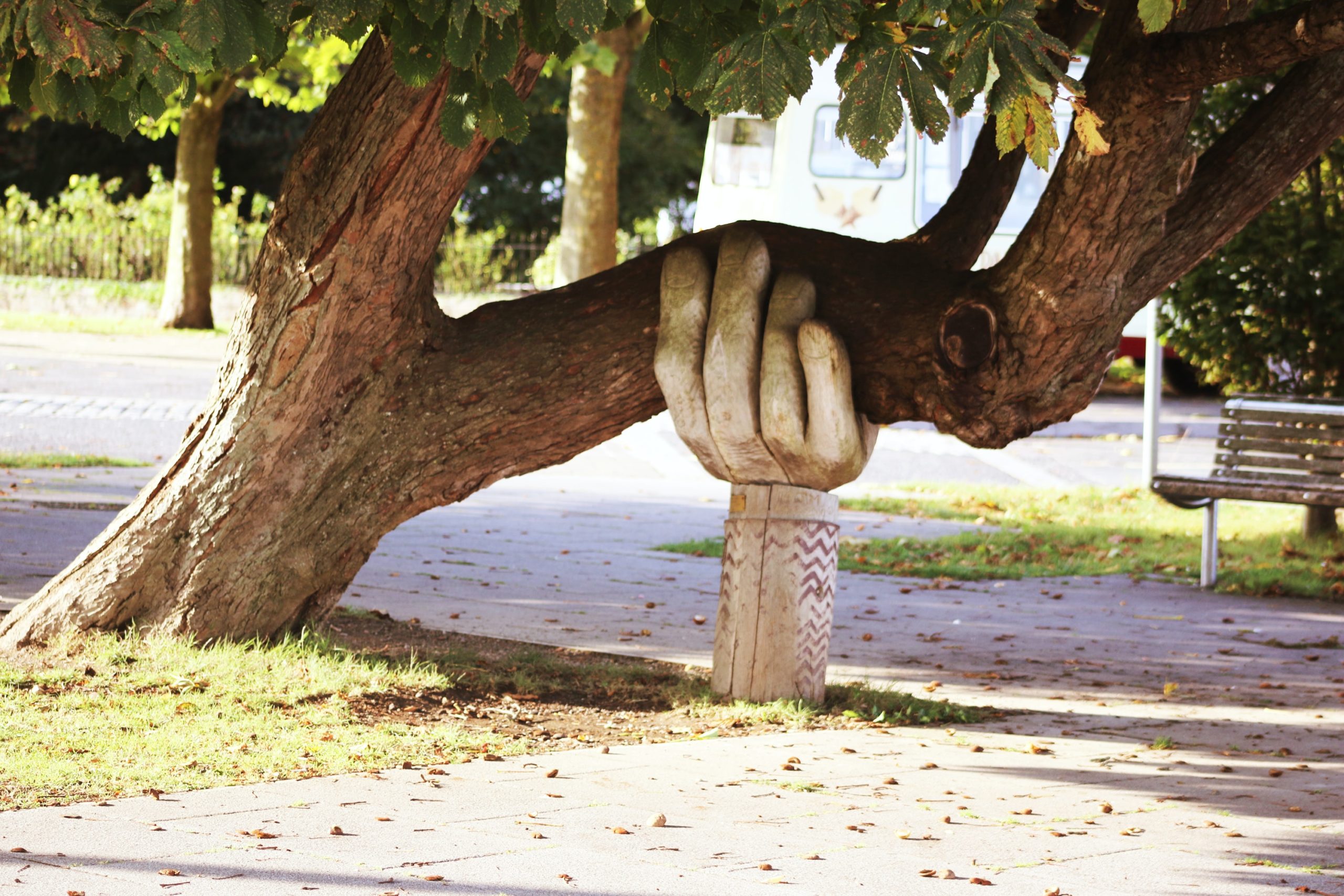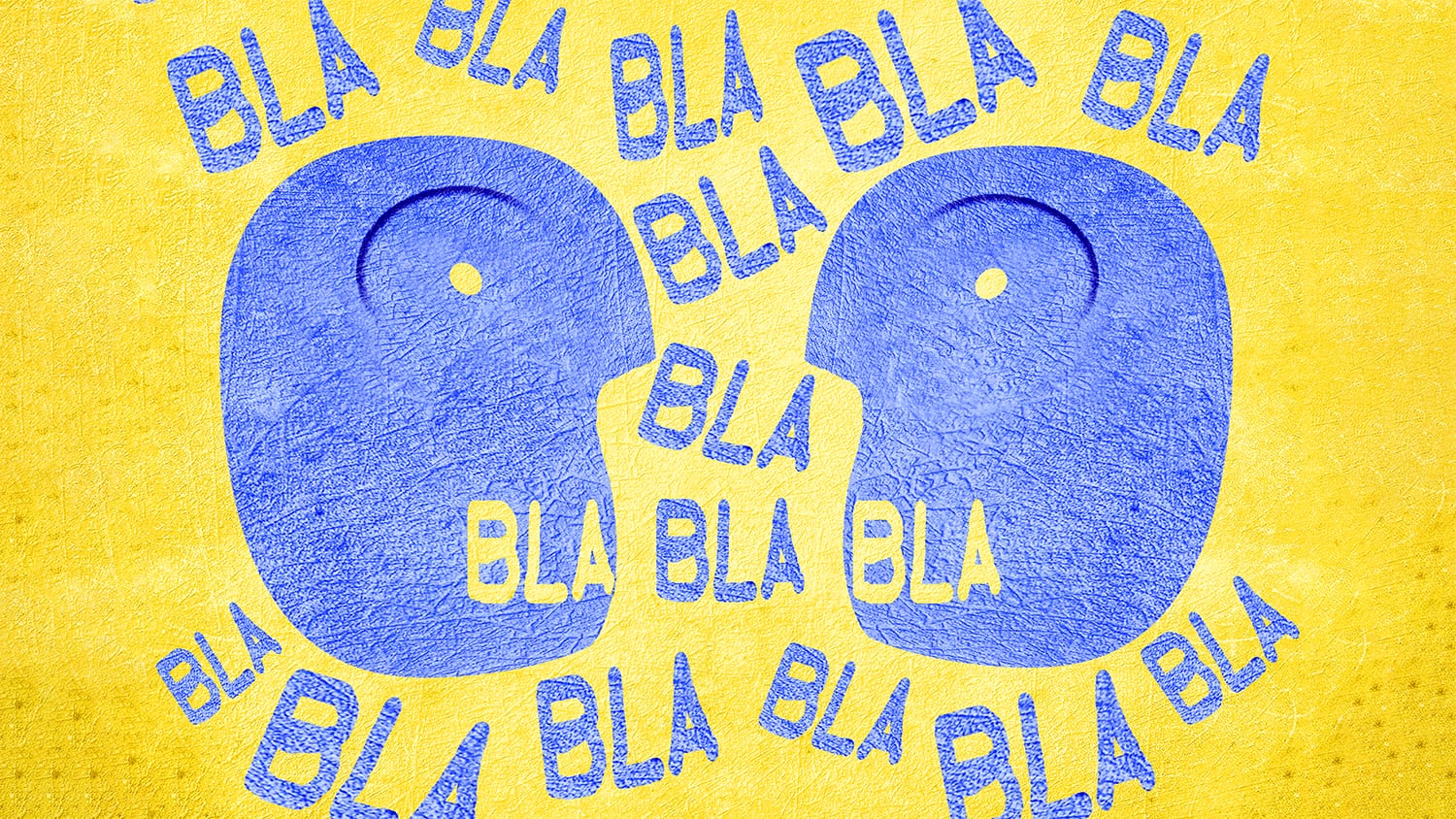Five strategies for giving (and receiving) constructive criticism

- Constructive criticism has become an important life skill.
- If social media are anything to go by, it’s also one many people lack.
- Like any skill, constructive criticism can be honed with practice and dedication to some key strategies.
Constructive criticism was once the professional coin of a select few. Editors and writers developed the skill to do their jobs, while the rare manager or professor may have honed their feedback craft if they were dedicated. For most though, constructive criticism rarely factored into daily life.
However, the critical circle has expanded — thanks in no small part to our digital saturation. Today, everyone is a creator, critic, and idea communicator rolled into one.
Businesses, restaurants, and even complete strangers ask us to review them online. The lifeblood of social media is the content we create and our critical analysis of others’. And the steady march from the manufacturing economy to one based on service and creativity means more of us will need to generate ideas while helping others construct and strengthen their own.
Criticism is no longer a behind-the-scenes workshop. It’s a social and economic mainstay, a skill front and center for many of our lives. It’s also a skill many of us must refine.
Can criticism even be constructive?
It’s worth considering what we mean by constructive criticism, a phrase that seems as paradoxical as a Buddhist koan. To construct is to build something up. To criticize is to tear it down. How can we practice both in a single action?
Thankfully, you don’t need to achieve enlightenment to criticize constructively. It helps simply to remember the word’s origin. Critic came to English by way of Latin’s criticus, which means “a judge, censor, or estimator.” Criticus itself hails from the Greek kritikos, meaning one who is “able to make judgments.”
Notice that neither of these etymons is necessarily scowl-faced. A judge can be favorable. An estimator can praise a work’s brilliance and pick apart its bungles. It’s from here that we derive one modern notion of a critic — that being, someone with the expertise to evaluate the merits of films, novels, overpriced entrees, and so on.
Unfortunately, critic’s English word family has its chippy cousins. Take the adjective critical. Just say the word out loud. You can’t help but hear the irritated toe taps of a censorious supervisor. And those tapping toes connect to critic’s second definition: “one given to harsh or captious judgment.”
When we qualify criticism as constructive, we signal in advance that we are working within the first definition. Yes, that requires pointing to places of disagreement or that need improvement. But it also means celebrating a work’s value and accomplishments.
And to reach that mindset, critics and recipients should follow these five strategies.

Establish trust
Author and MacArthur fellow Jacqueline Woodson knows the difference between constructive and destructive criticism. As a writer, she’s had to work with editors to improve drafts of her novels. As a reader and teacher, she’s offered advice to fellow writers.
In a Big Think+ interview, Woodson shared that she always wants people to start with what they love about the work.
“It really is fragile, right? When you first put your words out into the world, and for someone to jump on them and start critiquing or criticizing them right off the bat can be devastating. Even for me at this stage, it has to be incremental, and always starting with praise, lots and lots of praise, and then getting to the nitty-gritty,” she says.
But this strategy isn’t about inflating egos. It’s about establishing trust.
According to Paul Zak, founding director of the Center for Neuroeconomics Studies, when your strengths are recognized, your hypothalamus releases the neurotransmitter and hormone oxytocin. Also called the “love hormone,” oxytocin promotes sexual arousal as well as pro-social behaviors such as bonding and maternal care. Zak’s research suggests it is directly connected to trust, as well.
When someone’s brain is awash in oxytocin, they become less fearful and more trusting of others, even strangers. The more trusting, the more willing they are to be vulnerable in the other person’s presence. And as Woodson’s experience points out, vulnerability is a delicate but necessary step in receiving criticism.
The opposite is also true. To come in vulnerable and immediately face the firing squad — no matter how well-intentioned their aim may be — is brutal. Starting with what’s wrong sets the conversation’s tone in a stressful D minor, and as Zak points out, stress is a potent oxytocin inhibitor. It prevents people from interacting effectively with others.
Recipients can build trust with their critics, too. By being appreciative, honest about their vulnerabilities, and recognizing good ideas, recipients massage their critic’s hypothalamus to create a feedback loop of love hormone production and subsequent trust that opens a path to constructive criticism
Breathe deeply, think slowly
System 1 is the fast and intuitive thinking we use to read traffic signs on the freeway. System 2 is the slow and deliberate thinking used to solve math problems. While System 1 has its purpose — you don’t want to deliberate before hitting the brakes in rush-hour traffic — that place is neither giving nor receiving criticism.
In his seminal book Thinking, Fast and Slow, psychologist Daniel Kahneman distinguished between two modes of thinking: System 1 and System 2.
For critics, that means going slow and being attentive. They should take a breath, consider the work or idea as a whole, and choose an approach that works best. Their goal should be to short-circuit, as best as possible, the many cognitive biases that could stymie their criticism. These include:
- The egocentric bias, in which we rely too heavily on our own perspective.
- The confirmation bias, in which we look for evidence of our initial belief while discounting contrary evidence.
- The framing effect, in which our decisions are based on the way something is presented, not the thing itself.
Similarly, recipients shouldn’t react immediately and emotionally to criticism. Rather than despair at red markups, they too should take a breath and spend time analyzing their emotional state. Then they should process the criticism as a whole before returning to tackling lingering issues one at a time.
This is one reason constructive criticism is best facilitated face-to-face. When you can see how a person acts — not just their words but the minutiae in their facial expressions and body language — you have a better chance of understanding where your assumptions may be wrong or your interpretation needs more information to improve accuracy.
Use questions to your advantage
Another cognitive bias that plagues criticism is known as the curse of knowledge. When under its spell, people assume that everyone will have the same background knowledge and experiences they do. After all, who wouldn’t know these things that come so easily and effortlessly to them, right?
The critic assumes the recipient must be brainless to not see these obvious mistakes. Meanwhile, the recipient assumes the critic just doesn’t “get it.” Secure in their belief that such knowledge is widely known, they never elaborate on the missing element that would clear up the confusion.
As Steven Pinker notes in The Sense of Style: “Anyone who wants to lift the curse of knowledge must first appreciate what a devilish curse it is. Like a drunk who is too impaired to realize that he is too impaired to drive, we do not notice the curse because the curse prevents us from noticing it. This blindness impairs us in every act of communication.”
Thankfully, Woodson has a remedy to break the curse: questions. Lots of ‘em!
“[Constructive] criticism should be the kind of critiquing that asks questions, asks bigger questions. Why does this happen? I’m curious about where this is going. What were you intending for the reader to get? That kind of thing, so it doesn’t make you feel so vulnerable,” she says.
Questions help because they reveal the areas where the critic and recipient’s experiences and knowledge may not align. They show where something, so clear to one person, is muddled and opaque for the other. And they identify problems that the other may not see as a problem and therefore wouldn’t consider fixing.

Employ a growth mindset
But the question-focused approach demands a change to what psychologist Carol Dweck calls a growth mindset. Critics and recipients must see mistakes not as failures but as opportunities to learn.
Novelist Salman Rushdie embodies this mindset when discussing his feedback process: “I’m looking for people to say: I got confused here, or I wanted to know more about her, or I wanted a little less about him. And you want people to tell you that much more than to just say, “It’s great!” Because “It’s great!” doesn’t help me. I mean, it’s comforting, but I’m much more interested in people putting their finger on areas where they had problems.”
While praise and confidence building are nice, once trust is established, recipients must then take in the criticism and use it to discover what doesn’t work and correct it. That doesn’t mean taking every critic’s suggestion all the time — one can’t please all of the critics all of the time. But it means giving the advice honest appraisal and seeking ways to use it to improve.
But that requires a shift in the critic’s mindset as well. They must realize their job is not to fix the problem. That’s taking someone else’s work, ideas, or perspective and trying to make it their own. Instead, constructive criticism points to areas for potential growth that can make the work stronger in the end.
Choose your words wisely, listen carefully
It’s impossible to decouple emotions from the critical process, meaning shame, anger, and self-defeat are always potential outcomes. For this reason, criticism can never be a simple exchange of information. It is a social exercise in which we must be careful of the words we choose.
“The words I choose to describe a situation will give meaning to the situation and will shape my experience of this entire situation. That is the power of language,” psychotherapist Esther Perel told us. “We need to know what [our] words represent. They have cultural, historical, and social resonance.”
The questions-based approach outlined above is a good start. It shifts the conversation away from a series of need to’s — which can make the feedback read like a despotic decree — and shifts it to a process in problem-solving. Another tactic is to make the language impersonal and contributive. Instead of saying, “You did this wrong,” critics can switch to focus on their experience: “I had trouble with this part.”
Critics and recipients must also engage in quality listening. According to Perel, people too often approach conversation as a debate. They’re looking to prove their point and have already formulated a response before the other is finished talking.
But the quality of constructive criticism is determined by the quality of the listening on both sides. Perel notes that means acknowledging with attention, validating their point of view, and empathizing with them even if you ultimately disagree.
Constructive criticism points to areas for potential growth that can make the work stronger in the end.
Don’t fear constructive criticism
Like any skill, constructive criticism sharpens with practice and commitment. That’s true for giving and receiving criticism — which, in their way, are distinct skills.
When you practice receiving criticism, you build what Rushdie calls your “confidence muscles.” To extend his metaphor, seeking feedback is like going to the gym. Through resistance and some discomfort, you strengthen your confidence. Your ego may be sore in the morning, but as you continue, you’ll discover that you can recover from critiques with much less mental fatigue.
Giving criticism is more like building your coaching abilities. As you improve, you’ll discover what feedback is appropriate, which is extraneous, how to encourage through tough times, and how to better set aside your biases.
And ultimately, both athlete and coach are working toward the same goal: a win.
These five strategies can help anyone develop their constructive criticism skills. And while we won’t always get it right, devoting ourselves to the project will not only make us better but could help us be a little happier in our critically-minded era.
Watch more of these experts on Big Think+
Nurture a culture of lifelong learning with lessons on Big Think+. Our e-learning platform brings together more than 350 experts, academics, and entrepreneurs to help your organization develop the skills necessary to succeed in the 21st century.
Join authors such as Jacqueline Woodson, Salman Rushdie, Esther Perel, and Sheila Heen for lessons in:
- A Writer’s Guide to Creativity and Criticism
- Use Criticism to Your Advantage
- How to Have Difficult Conversations
- The Science of Receiving Feedback
Learn more about Big Think+ or request a demo for your organization today.





